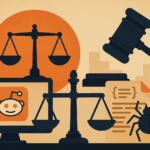It is a hallmark of the disruptive nature of digitalization that it has turned the tables on surprised companies who have gone from industry leaders to bankrupt has-beens in relatively short periods of time. In an effort to encourage our clients to avoid similar thought traps, and to commemorate and analyze a few of the most famous of these failures, Innovation Vista is initiating an “April Fool’s Day” article series. We are pleased to kickoff this series with the sad & strange case of Blockbuster.
The Multiple Missed Opportunities of Blockbuster with Netflix
The disruption of the video rental industry is very unique in that the industry leader had multiple chances to purchase, and then to partner with, its disruptor, less than a decade from its own bankruptcy.
To our knowledge, this seems to be the best example of opportunity of this kind being offered, and of course, missed.
- No bookstores – or Wal-mart/Sears for that matter – ever had serious talks about acquiring Amazon. None could afford to do so at this point. (Toys ‘R Us did have a chance to partner with the online retail giant, but that is its own story.)
- Xerox was never offered a chance to acquire either Microsoft or Apple, both of whom leveraged the graphical user interface Xerox had invented to create major operating systems revenue streams.
- Kodak famously invented the digital camera, but then infamously neglected to develop it for fear of disrupting their own film business. (That is also its own story, of course). But to our knowledge they were not given a chance for an acquisition or strategic partnership to save their fate.
The Missed Chance to Buy
In 2000, Reed Hastings offered Netflix to Blockbuster for a mere $50 million but was rebuffed by Blockbuster CEO John Antioco, who infamously categorized Netflix as “a very small niche business”. (To be fair, at that point Netflix only offered its mail-order disc subscription and had not yet unveiled its now-dominant streaming service. We’re not sure that even at that point this represented “a very small niche”, but we do have the benefit of hindsight obviously far clearer than Blockbuster’s foresight.)
Interesting to note: the full $50 million asking price of Netflix would have represented a little more than 1% of Blockbuster’s annual revenue of ~ $5 billion in 2000.
The Missed Investment Gain
Not only did Blockbuster miss owning the leading next-generation entertainment platform of the 21st century, but they missed even investing in it at all. In the intervening years, Netflix has gone on to surpass $150 billion in market cap, adding insult to injury as Blockbuster not only went bankrupt, but missed out on an incremental financial return. Consider how different their fortunes might have been, had they even agreed to acquire a minority stake in Netflix… Any money invested at this offer would have returned around 300,000%…
The Missed Chance to Partner
Sometime in this same period after the turn of the century, Hastings also traveled to Dallas to pitch a partnership to Blockbuster wherein Netflix would operate an online offering for Blockbuster in exchange for in-store advertising of Netflix. He was reportedly “laughed out of the room”… Blockbuster would be bankrupt (then sold to Dish Network, then fully closed down) less than a decade later, after desperate 11th-hour failed attempts to stand up mail-order and drop-box offerings to compete with Netflix and Redbox.
The Blind Spot which sunk Blockbuster
It wasn’t a lack of management skill which did in Blockbuster; by all reports Antioco and his management team were skilled retail experts who climbed to the top position in their industry and profitably operated more than 9,000 locations and employed more than 80,000 people for more than two decades. Blockbuster reached a level of success most companies only dream of reaching; they were not amateurs.
Blockbuster failed because they refused to consider the possibility that technology could “disrupt” their industry, changing everything on which their business model depended. Online selection for mail-order delivery proved to be only a minor preparatory shift toward full online delivery of a product which, by its nature, became deliverable digitally as data. This drove huge shifts in the underlying dynamics of their customers’ preferences.
Netflix was also Somewhat Surprised by the Speed and Scale of the Shift
From the fact that Reed Hastings offered the company for sale to Blockbuster for as little as $50 million in 2000, it is clear that even Netflix’s executives were surprised by the speed and scale of the shift in customer preferences and behavior, and the resulting exponential growth not only of their market share, but of the size of the target market of home entertainment itself.
The Lessons to be Learned
The exact set of circumstances leading to Blockbuster’s demise will not be repeated again, of course. But the pattern it followed, and which has also disrupted other leading companies, is one that is absolutely playing out in other industries in the present day.
- More and more information is being digitized, i.e. being turned into data
- More and more business models are being digitalized, i.e. being further automated with computers not just gathering that data, but making decisions in processing, and in many cases enabling delivery of products and services
- Consumers are increasingly expecting near real-time services and extremely quick product delivery timeframes, to a level absolutely requiring predictive analytics to support
- B2B clients are increasingly demanding scalable service and products, and subscription-based delivery in place of traditional purchases
Disruption of the kind that took down Blockbuster is not just a risk in industries where the product can be sent across a wire, but in any economic activity where data and automation can enable innovative service levels or delivery options.
Need help evaluating how your company might be disrupted? – or might become the disruptor? Contact us to begin a dialogue about how our innovation experts can take innovation beyond efficiency for your company, to grow revenue.




